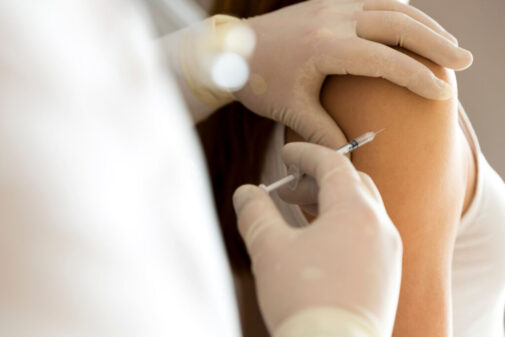Is this diagnosis in decline?

After watching autism rates steadily rise for the past 20 years, new research suggests that the prevalence of autism in American children may have stabilized.
Research published in a recent issue of JAMA shows that the rates of autism spectrum disorder in children in the U.S. remained stable from 2014 to 2016.
Dr. Judith Gravdal, chair of Family Medicine at Advocate Lutheran General Hospital in Park Ridge, Ill., is not surprised because of significant improvements in understanding the disease and how and when to diagnose it.
“Awareness of the diagnosis and of available therapeutic interventions for autism has improved significantly among patients, child care providers and physicians who care for young children,” says Dr. Gravdal.
Many factors could potentially account for the spike in autism rates over the past two decades. In their study, researchers noted increased public awareness of the disorder, more children being referred to physicians for diagnosis and changes in diagnostic criteria all could have attributed tothe number of children being diagnosed.
Today, better screening methods are in place, including formal screenings performed using instruments such as M-CHAT during well child visits for those between 18- and 30-months old that have facilitated detection and referral, as early intervention results in improved outcomes. In addition, universal screenings minimize the risk of missing children with the disorder.
“Each child is affected differently, and a team approach for the child and their family is essential,” says Dr. Gravdal.
According to the Centers for Disease Control and Prevention, about one in 68 children is identified with Autism Spectrum Disorder, which includes autistic disorder, disintegrative disorder, pervasive developmental disorder-not otherwise specified and Asperger syndrome.
It is nearly five times more common in boys than girls. Children as young as two can be diagnosed with autism, although it’s most common to receive a diagnosis at age four. Research is ongoing to determine what causes autism spectrum disorders, as science does not have a clear understanding yet. Dr. Gravdal says that one thing we do know is that autism is not caused by vaccines.
Additionally, Dr. Gravdal says that a family physician or pediatrician is often the first medical professional alerted to the possibility that a child has autism while performing a well child visit.
If you notice any of the following, let your child’s doctor know during your next exam, as they could indicate the presence of one of the conditions that falls under Autism Spectrum Disorder:
- Not making eye contact with others
- Repeating words and phrases
- Repetitive behaviors such as flapping, rocking or spinning
- Delays in language development or is nonverbal
- Highly restricted interests
- Easily upset at minor changes in routine
Related Posts
Comments
5 Comments
About the Author
Colette A. Harris, health enews contributor, is the public affairs and marketing coordinator at Advocate Lutheran General Hospital in Park Ridge, Il. She holds a Master of Science degree in journalism from Northwestern’s Medill School of Journalism and has nearly a decade of experience writing about health and wellness, which are her passions. When she’s not writing, you can find her practicing yoga, cooking, reading, or traveling.


















Can you site links to the studies that show that vaccines do not cause autism? I would like to read them.
You can go onto the Autism Speak website & they have tons of links that prove the vaccines do not cause Autism. In the case of my son he has 16p13.11 (a chromosomal micro duplication) & I was just diagnosed as the carrier of it. I’m now doing more research on that as well because there is little know to this genetic mutation as it’s not very common.
Please be careful with this static. The latest DSM has changed (limited) the diagnosis requirements for Autism. My oldest has Asperger’s. This was previously under the Autism diagnosis but I have been told that is no longer the case.
I think there is a great deal of misunderstanding within the provider community about qualifies as ASD. Some providers have told me that Asperger’s is no longer considered an Autism disorder. I also think that parents and family members can be confused about their child’s casual diagnosis by pediatrician vs the functional tests that provide a more scientific method of diagnosis. I like this website as an easy to read site for good info: https://www.nimh.nih.gov/health/topics/autism-spectrum-disorders-asd/index.shtml
Brain scans of youngsters as much as 6 months of age could possibly predict whether or not a toddler will develop autism, a brand new research suggests. In the research, researchers discovered that infants who later developed autism had bigger quantities of cerebrospinal fluid – the clear fluid that cushions the brain contained in the cranium – that could possibly be seen on an MRI, in comparison with those that didn’t develop autism . What’s extra, the researchers additionally discovered that CSF ranges have been so intently aligned with the danger of autism that CSF quantity measurements might be used to foretell the event of autism amongst high-risk youngsters or these with an older sibling Con the situation. Measurements of CSF quantity at 6 months predicted that high-risk infants have been recognized with autism at age 2 with 70 % accuracy, 11 details that each mother or father ought to find out about their child’s brain. Although extra research are wanted, researchers say that in the future, docs may be capable of management CSF to assist measure a toddler’s danger of autism. CSF neurostimulation might be one other software to assist pediatricians diagnose autism as quickly as potential, stated research writer Mark Shen, a postdoctoral fellow in psychiatry on the University of North Carolina on the School of Medicine Chapel Hill.